Editor’s note: This story first ran ahead of the 75th US Women’s Open, delayed from mid-2020 to that December at Champions Golf Club in Houston. It has subsequently been updated and adapated ahead of this year’s championship.
It is a landmark US Women’s Open, the first time the USGA has taken the biggest championship in women’s golf to Pebble Beach Golf Links, one of the most famous golf courses in the world. And this year’s is certain to be among the most memorable championships in its 78-year history.
In celebrating the milestone, it felt right to reflect on the championship and spotlight the moments that have helped define the event through the years. There have been a variety of winners – from phenoms and Hall of Famers to dark horses and unknowns – winning in all sorts of ways. There have been tears of joy shed, and tears of heartbreak, too.
We recount it all in our countdown of the 18 most memorable US Women’s Opens, a ranking that is likely to inspire some debate. Before we begin, however, here are a few interesting historical facts about the championship.
• It was not a USGA event initially. It was started by the Women’s Professional Golfers Association, which held it for three years. Then the LPGA was formed and it staged it the next four years. In 1953, the LPGA asked the USGA to take it over.
• The first US Women’s Open in 1946 had a field of only 39. Entries have topped 1,000 every year since 2004, with a record 2,107 coming this year for Pebble Beach.
• Mickey Wright and Betsy Rawls share the record for most US Women’s Open victories, with four.
• Forty-five of the first 77 US Women’s Opens were won by those in the World Golf Hall of Fame.
• Among those who never won the US Women’s Open: Kathy Whitworth, Nancy Lopez, Lorena Ochoa and Beth Daniel.
OK, on to the countdown.
18. Annika goes back-to-back (1996)
Annika Sorenstam had formally announced her arrival in women’s golf the year before at The Broadmoor, but began to forge her legacy as the dominant golfer of her generation by winning the US Women’s Open for a second straight year. This one came at Southern Pines, a convincing six-stroke victory over Kris Tschetter after shooting a closing 66 to break the 72-hole scoring record with an eight-under 272 total. “It’s a wonderful feeling to win this championship,” Sorenstam said through tears. “Once was wonderful. To win it twice was more than wonderful.” In 2006, she would add a third Open victory to her distinguished record of 72 LPGA titles and 10 majors.
• • •
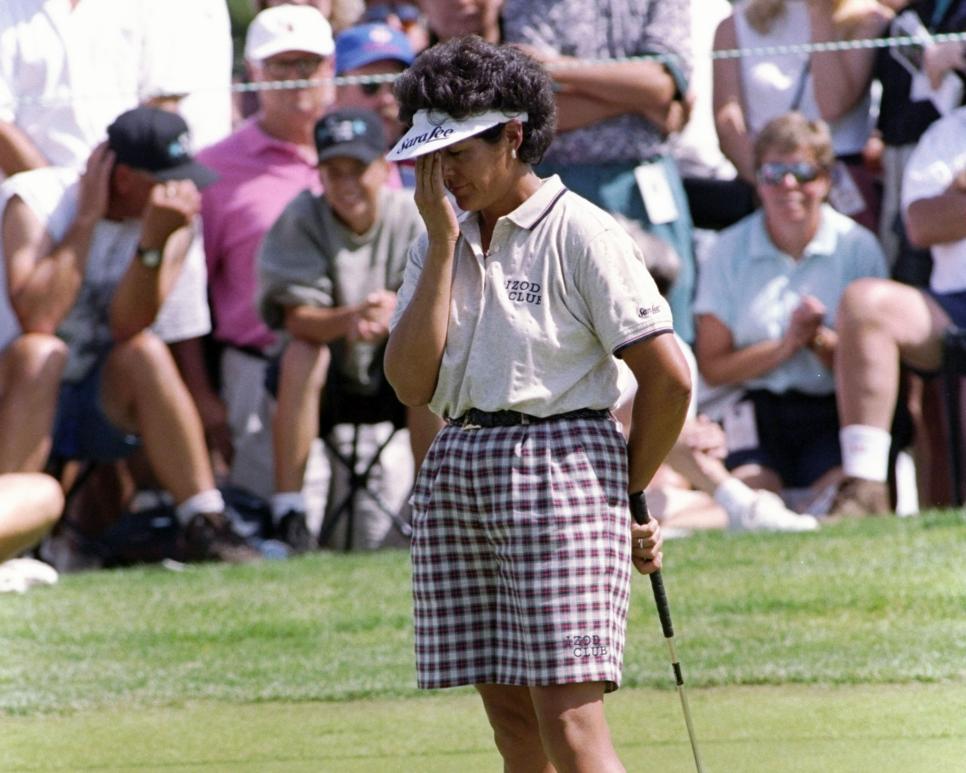
She was 40 and at the end of her reign, with 48 LPGA victories but none of them the US Women’s Open. Yet Nancy Lopez was tied for second after the second round at Pumpkin Ridge Golf Club outside Portland, Oregon, and outright second after the third, trailing by three. Lopez outplayed England’s Alison Nicholas in the final round (69 to 71), but ultimately came up one stroke short after two bogeys in her final four holes and missing a 15-foot birdie putt on the last to force a playoff. Finishing second for the fourth time in her national championship, Lopez knew she had missed her last best chance at victory: “This should have been the one, darn it.”
• • •
16. Grand Slam bid stymied (1986)
Pat Bradley had won the first two women’s majors that year, the Nabisco Dinah Shore and the LPGA Championship, but her try at a third straight, in the US Women’s Open at NCR Country Club, came up three strokes short as she finished in fifth place. Bradley, 35 at the time, would go on to win the du Maurier Classic a few weeks later, becoming the first and only woman to win three legs of the Grand Slam in one year in the modern era. History will note that the other major winner in 1986 was Jane Geddes, who prevailed over Sally Little in a playoff at NCR to win the US Women’s Open, the first of her two career major victories.
• • •
15. A legend in a landslide (1949)
The US Women’s Open in ’49 was played at Prince George’s Country Club in Landover, Maryland, a par-75 layout that was mastered by only a single player. Louise Suggs played 72 holes in nine-under par 291 and won by a record 14 shots over Babe Zaharias. Suggs would win 61 tournaments, including a second US Women’s Open in 1952 that helped her claim 11 majors in her Hall of Fame career.
• • •
14. First time on TV (1965)
The final round of the US Women’s Open at Atlantic City Country Club in New Jersey was nationally televised and it produced a worthy champion. Future Hall of Famer Carol Mann won by two, the third of her 38 LPGA wins and second of two majors. The championship has been televised every year since.
• • •
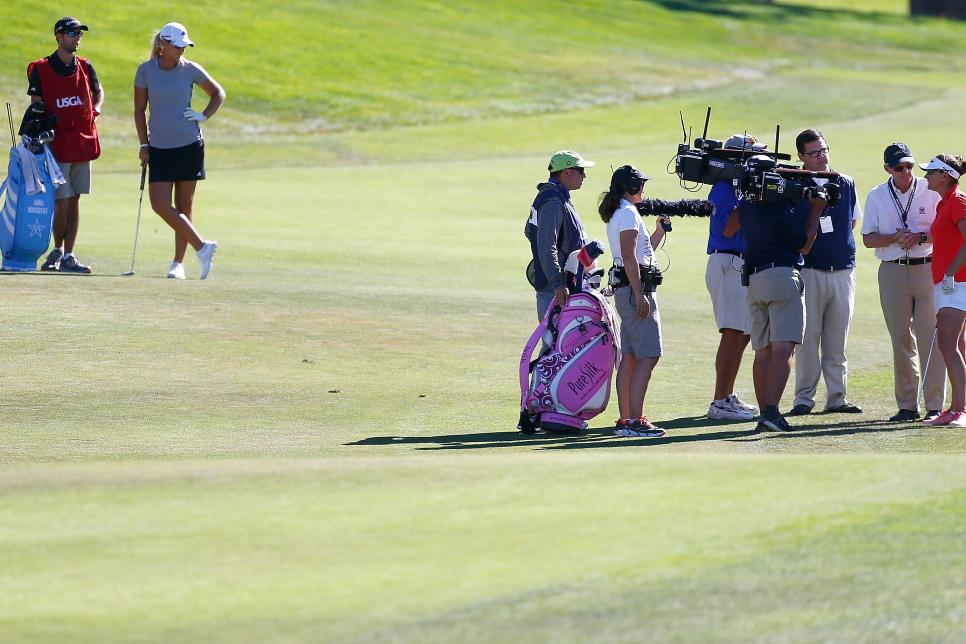
Tied at six-under at California’s CordeValle Golf Club after 72 holes, Brittany Lang and Anna Nordqvist continued on in a three-hole aggregate playoff. On the second extra hole, the 17th at CordeValle, Nordqvist inadvertently and unknowingly touched the sand with her club in a fairway bunker. The infraction was caught on TV, and Nordqvist incurred a two-stroke penalty, which she was told about while playing the next hole. Lang would go on to the win the playoff by three. “Just focusing on hitting my shots, and apparently I touched the sand,” Nordqvist said afterwards. “It wasn’t on purpose. And just one of those things. I have to deal with the consequences. Unfortunately it happened, but it’s not the end of the world.”
• • •
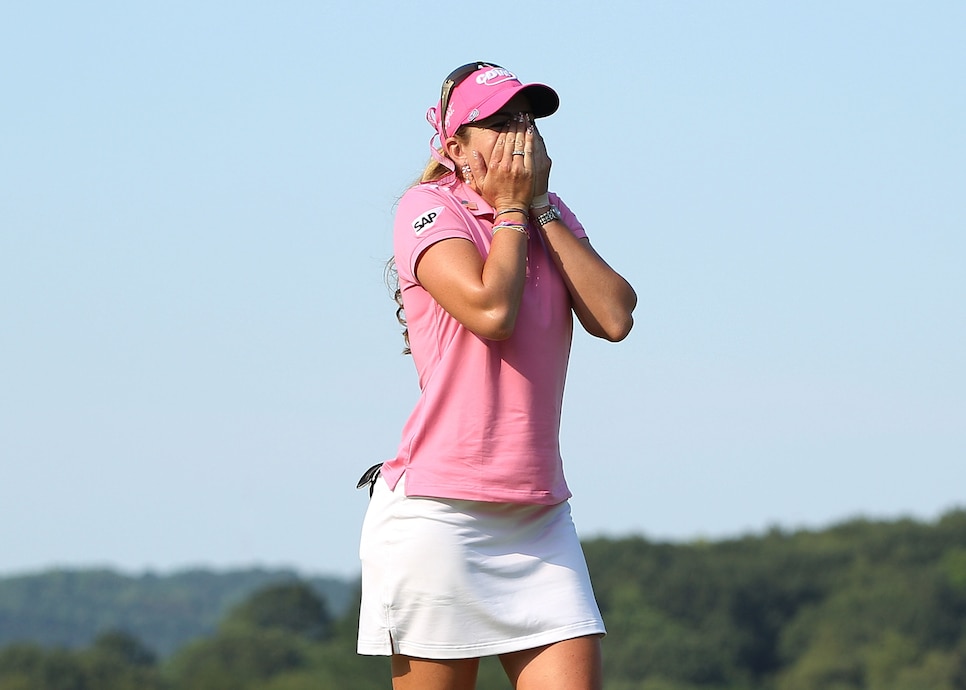
One of the game’s most popular players, Paula Creamer had eight LPGA victories prior to arriving at Oakmont Country Club but was still in search of a major title to help validate her status as one of the top players. In the months preceding the championship, the 23-year-old nursed a hand injury that still bothered her throughout the week, and wasn’t exactly conducive to playing in Oakmont’s gnarly rough. She prevailed nonetheless, winning by four and posting a 72-hole score of three-under 281.
• • •
11. The very first champion (1946)
The inaugural US Women’s Open was a matchplay event that had a 39-player field to start, with the final coming down to two future World Golf Hall of Famers, Patty Berg and Betty Jameson. Berg, who won 36-hole strokeplay qualifying by seven shots, prevailed in the 36-hole final, 5&4, at Spokane Country Club in Washington. The 28-year-old, who four years later would be one of the founding members of the LPGA Tour, claimed a first prize of $5,600 in war bonds. The next year and from then on, a 72-hole strokeplay format was used.
• • •
10. An amateur beats the pros (1967)
France’s Catherine Lacoste, 22, made history with her two-stroke victory at The Homestead, becoming the first and only amateur to win the US Women’s Open. That said, it didn’t come without some nerves; Lacoste, daughter of tennis star Rene Lacoste, took a five-stroke lead into the final round and shot 79, but hung on for the title. In 1969, she went on to win the British Ladies Amateur (a title her mother won in 1927) and the US Women’s Amateur, but by 1970 she had all but retired from competitive golf, never having turned professional. No other amateur has been able to match Lacoste’s feat, though others have come close, notably Morgan Pressel and Brittany Lang finishing tied for second in 2005 and Nancy Lopez tying for second in 1975.
• • •
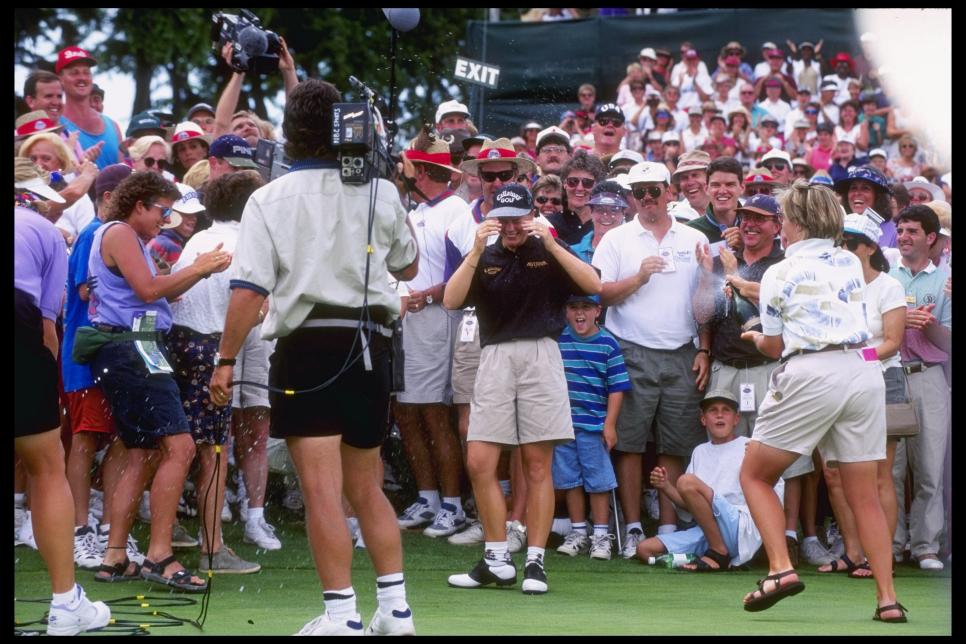
Big things were expected from Sorenstam after she became the first international player to win the NCAA title in 1991 and finished runner-up at the 1992 US Women’s Amateur. But after joining the LPGA in 1994, she had failed to post a victory prior to arriving at The Broadmoor, and didn’t look as though she would do it in Colorado, either, entering the final round trailing leader Meg Mallon by five. But Sorenstam closed with a 68, Mallon a 74 and Annika had the first of her 72 LPGA victories and 10 majors.
• • •
8. An unexpected champion (2003)
Hilary Lunke’s brief career had one shining moment when she shocked women’s golf by winning the US Women’s Open at Pumpkin Ridge, defeating Angela Stanford and Kelly Robbins in a playoff. At 24, the Stanford University graduate was the first winner who had gone through local and sectional qualifying to play her way into the field. It was her only victory in an otherwise lacklustre career, and she retired five years later after only seven seasons on the LPGA Tour. In 24 career major starts, her next best finish was a T-37.
• • •
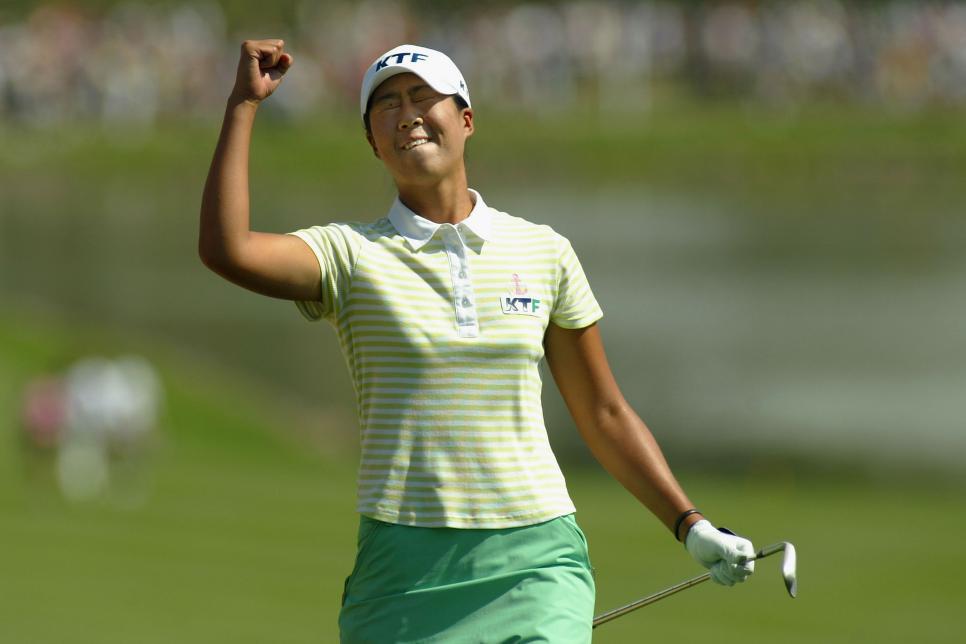
Morgan Pressel, then a 17-year-old high-schooler, was trying to accomplish the improbable at Cherry Hills Country Club in Denver and become the second amateur to win the US Women’s Open – and the youngest ever winner of a major title. She was tied for the lead on the 72nd hole, standing in the fairway and watching the other co-leader, Birdie Kim, play her third shot on the par 4 from a greenside bunker. The 23-year-old South Korean proceeded to shock everyone – particularly Pressel – when she holed the tricky sand shot for a birdie. “I was never a good bunker player,” Kim said. “Finally, I make it.” Pressel couldn’t regroup, bogeying the hole to allow Kim to win by two, her only LPGA victory.
• • •
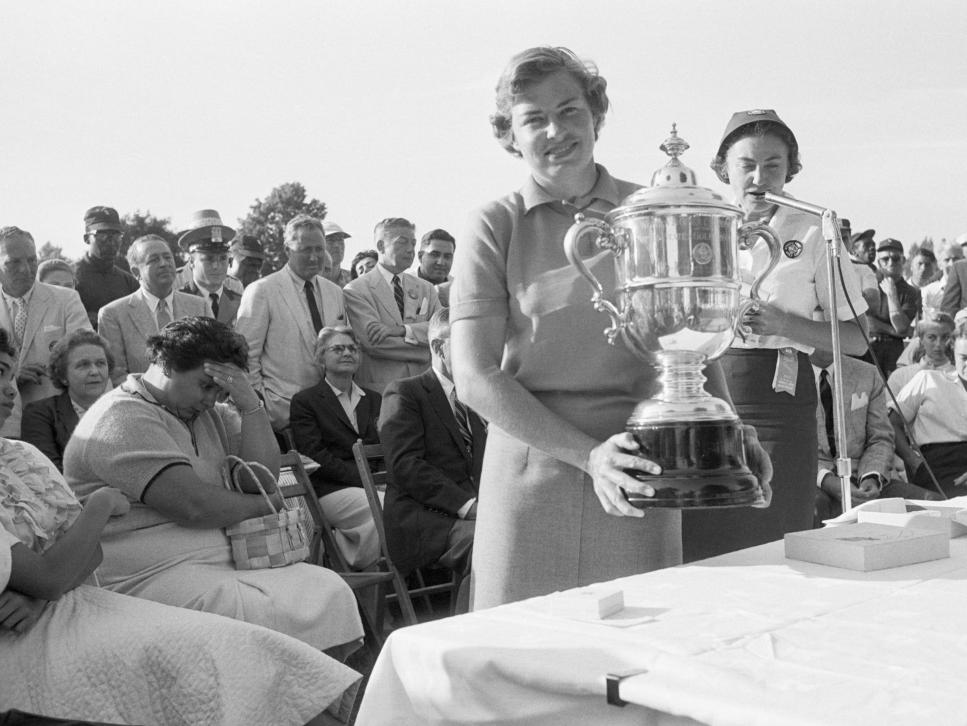
Jackie Pung had the championship at Winged Foot Golf Club won by a stroke over Betsy Rawls, then lost it when it was revealed she had signed an incorrect scorecard. She made a bogey 6 on the fourth hole of the final round, yet her playing partner, Betty Jameson, marked Pung down for a 5. Pung, incidentally, made the same error on Jameson’s card and both were disqualified. “Winning the Open is the greatest thing in golf,” Pung, 35, said at the presentation ceremony. “I have come close before. This time I thought I’d won. But I didn’t. Golf is played by rules, and I broke a rule. I’ve learned a lesson. And I have two broad shoulders…” Herbert Warren Wind, writing for Sports Illustrated, noted: “You will probably never see an unhappier group of people at a golf championship than was gathered at the Winged Foot Golf Club.” Indeed, the members had become fond of Pung during the week, and after the mistake raised $US3,000 among them to present to her – $1,200 more than she would have earned with the victory.
• • •

Expectations had been exceedingly high for Michelle Wie throughout her career, not long after having qualified for the US Women’s Amateur Public Links at age 10 and missing the cut by one in the PGA Tour’s Sony Hope in Hawaii at 14. Yet these expectations went largely unfilled until she won the US Women’s Open, defeating Stacy Lewis by two strokes at Pinehurst No.2, the week after Martin Kaymer had won the US Open there in the USGA’s memorable back-to-back Opens. The 24-year-old’s reaction told it all: “Oh, my God, I can’t even think straight. I’m so happy right now. I’m just unbelievably happy. I’m so honoured to have my name on the trophy. Just so grateful for everything. I’m just really happy. I’m really thankful, just everything, feeling every single emotion I can right now.”
• • •

A three-time winner of the US Women’s Amateur, Juli Inkster seemed certain to one day claim a US Women’s Open title when she embarked on her Hall of Fame career. Yet in her first 19 starts in the championship she had only two top-10 finishes (including a painful playoff loss in 1992 when Patty Sheehan birdied her last two holes to force the extra round, then won by two shots). At age 38, in her 20th start, however, Inkster put together a stellar performance at Old Waverly Golf Club, shooting a USGA record 16-under par score to win by five strokes. “The hardest part was it really was my tournament to lose. No one had the pressure on except me. I had no one to blame but myself,” Inkster said, having started the final round up by four shots. It was the 20th of her 31 career LPGA victories, and the first of two US Women’s Open titles (she’d win again in 2002 at Prairie Dunes). “This is the ultimate tournament,” Inkster said. “No one can take away from me that I’m a US Open champion.”
• • •
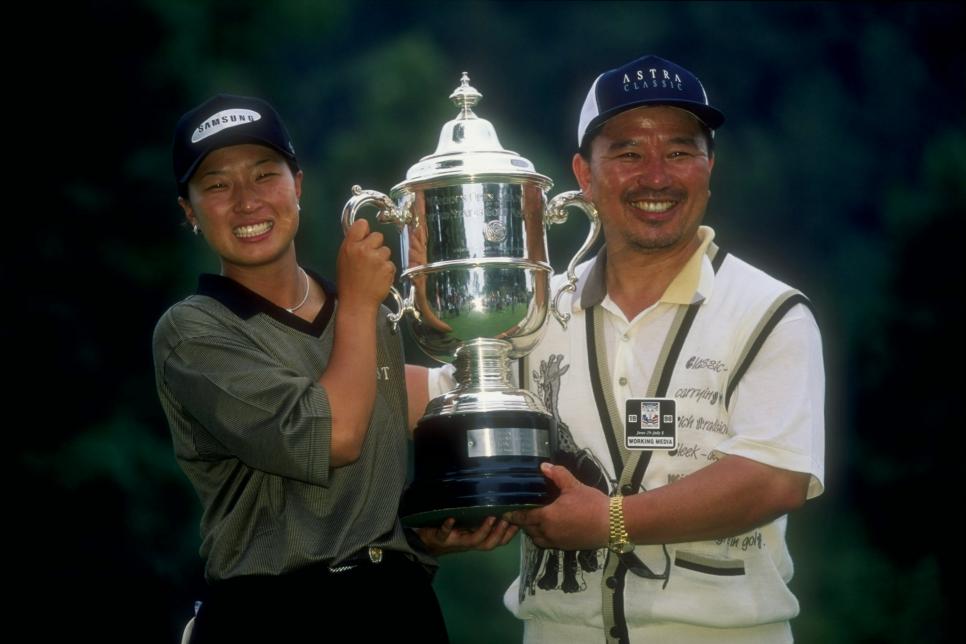
She was only 20, still mostly an unknown outside South Korea who’d surprised American fans by winning the LPGA Championship six weeks earlier. Yet Se Ri Pak probably would have been considered an underdog in the playoff at the US Women’s Open at Blackwolf Run had it been not for the person she was facing. Jenny Chuasiriporn, a 20-year-old Duke University undergrad, made a 40-foot putt on the 72nd hole to force extra holes and was trying to write her own “can you believe this” story. Still tied after the 18-hole playoff, the pair went another two holes before Pak pulled out the victory with a birdie. The championship was televised in South Korea, and Pak’s victory ignited a movement that has resulted in South Korea’s LPGA dominance. “Back then, there was not the communication there is today,” Pak said when recalling the win. “It wasn’t until a week after I won that I learned that all of Korea was watching. It was unbelievable to me.” Following Pak’s lead, 46 more South Korean golfers have won LPGA Tour titles and all up 18 South Koreans have combined to win 33 majors. “At that moment,” said 2011 US Women’s Open winner So Yeon Ryu of Pak’s win, “golf is my hobby and violin my dream. But now violin is my hobby, golf is my dream, my job. So totally changed.” Pak went on to win 25 LPGA events, including five majors, before retiring in 2016. She is in the World Golf Hall of Fame.
• • •
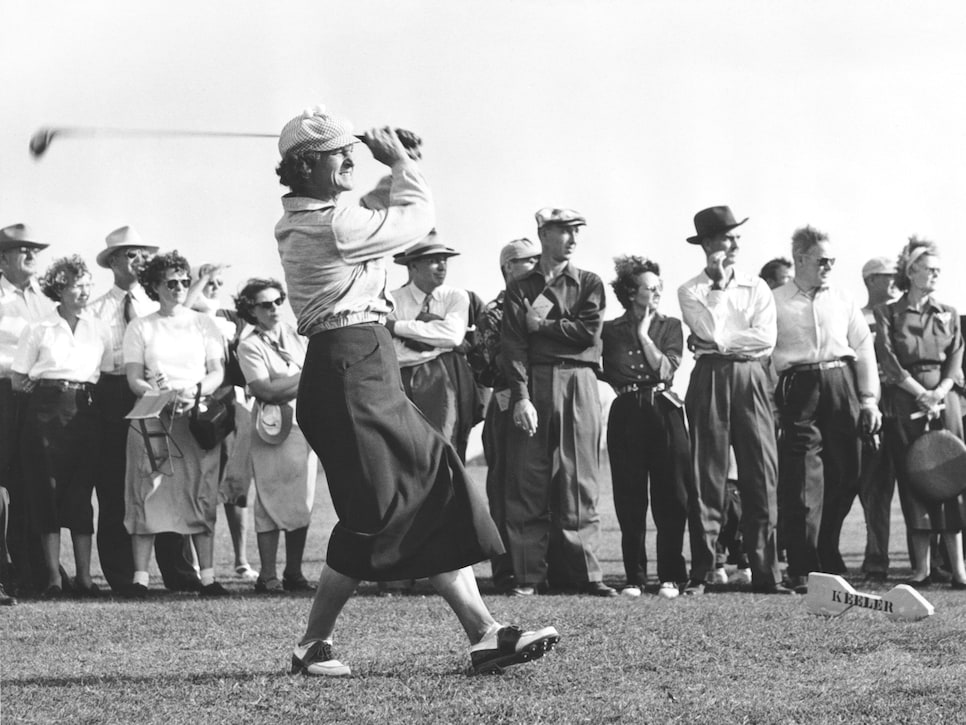
Fifteen months after undergoing cancer surgery, Babe Zaharias, at 43, became the oldest player to win the US Women’s Open, running away with the title by 12 strokes at Salem Country Club in Massachusetts, her third US Women’s Open victory. “My prayers have been answered,” said Zaharias, who had missed the 1953 championship due to the surgery. “I just told the Lord to let me play again, and I’d take care of the winning. Today, we sealed the bargain.” Indeed, her performance was described in Golf World magazine as “the greatest sustained golf ever in a women’s championship”. At year’s end, the Associated Press voted her the female athlete of the year for the sixth time. Zaharias would not have a chance to defend her title a year later, forced to miss the championship because of back surgery that revealed the cancer had returned. She died in September 1956, at 45.
• • •
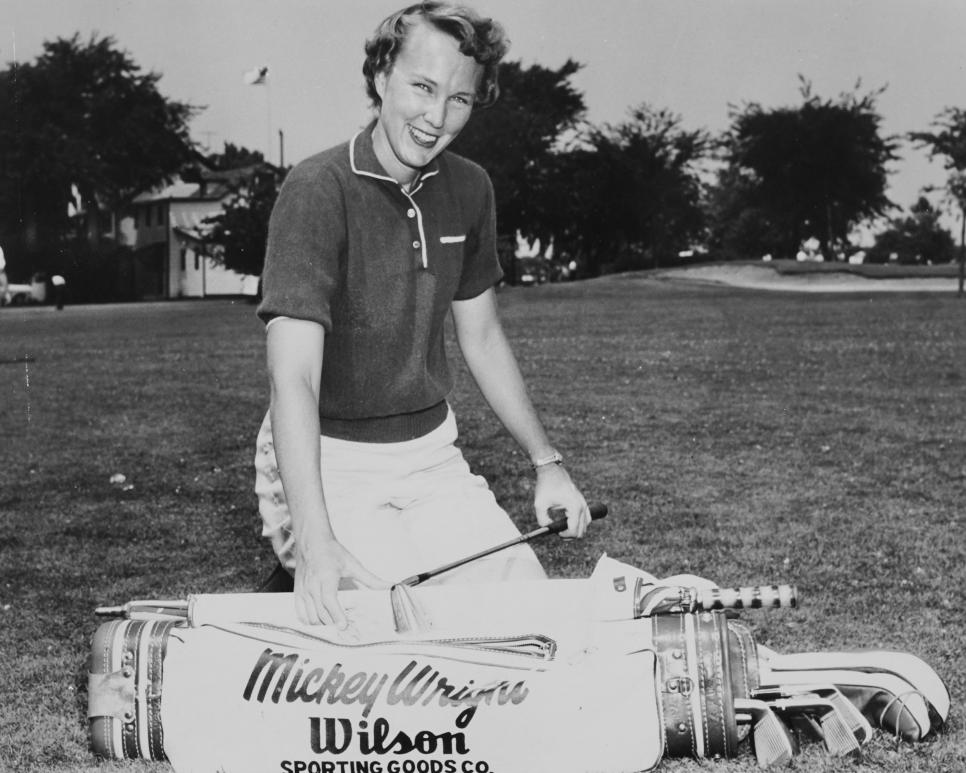
Any US Women’s Open list has to include Mickey Wright, who won the last of her four US Women’s Opens at San Diego Country Club, the golf course on which she grew up alongside friend Billy Casper. “That was a very personal tournament,” Wright said years later. “It was my home. It was the first tournament that my mother and father had both seen me play in.” Wright beat Ruth Jessen, who also had San Diego ties, by two shots in an 18-hole playoff. “I hate to lose,” Jessen said, “but there is some consolation in losing to the greatest woman golfer in the world.” Indeed, it was Wright’s seventh win of the season and she would add four more titles before the year was out. Wright eventually ran her LPGA victory total to 82, including 13 major championships. Wright’s connection to the US Women’s Open has continued past her death in 2020 at age 85; in Wright’s will she bequeathed her estate and possessions to the USGA, which announced that it would name the medal the US Women’s Open champion receives after Wright from 2020 onwards.
